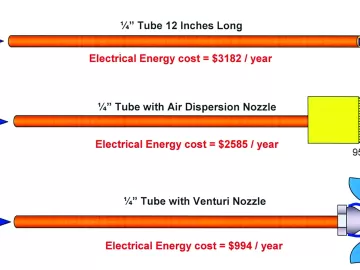Optimizing Pneumatic Systems for Extra Savings
Compressed air users looking for energy reduction often identify their air compressors as a prime area for savings potential. But …what about end uses? There are a large number of obvious measures that can be implemented, such as leakage reduction, reducing open blowing and eliminating inappropriate uses..however, there are other more technical opportunities available that involve properly specifying or redesigning existing pneumatic circuitry in compressed air operated machines and processes.












